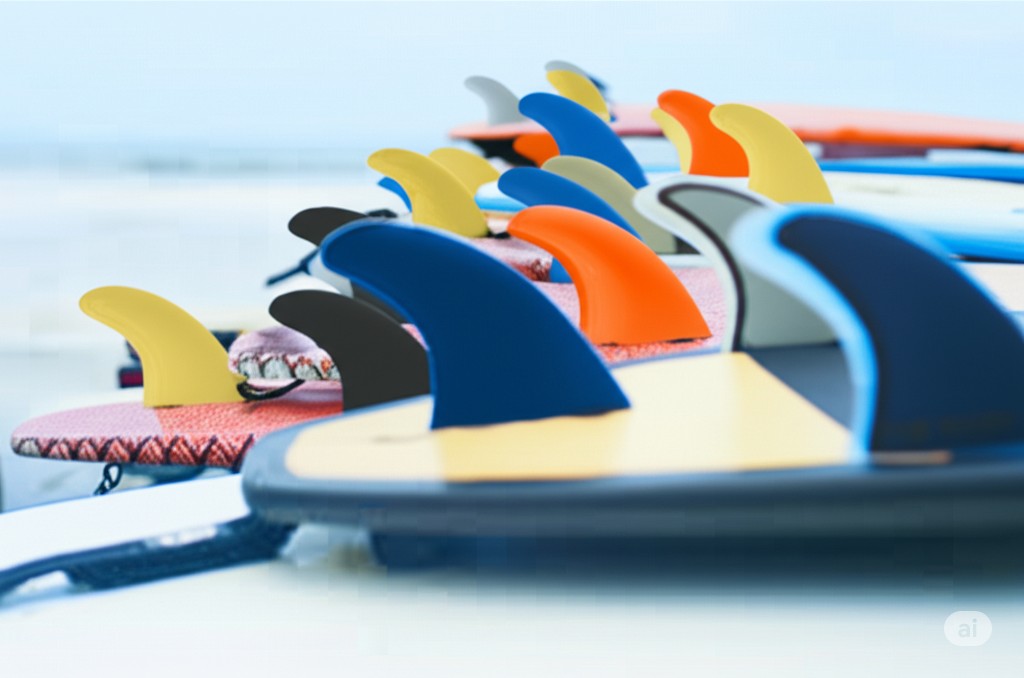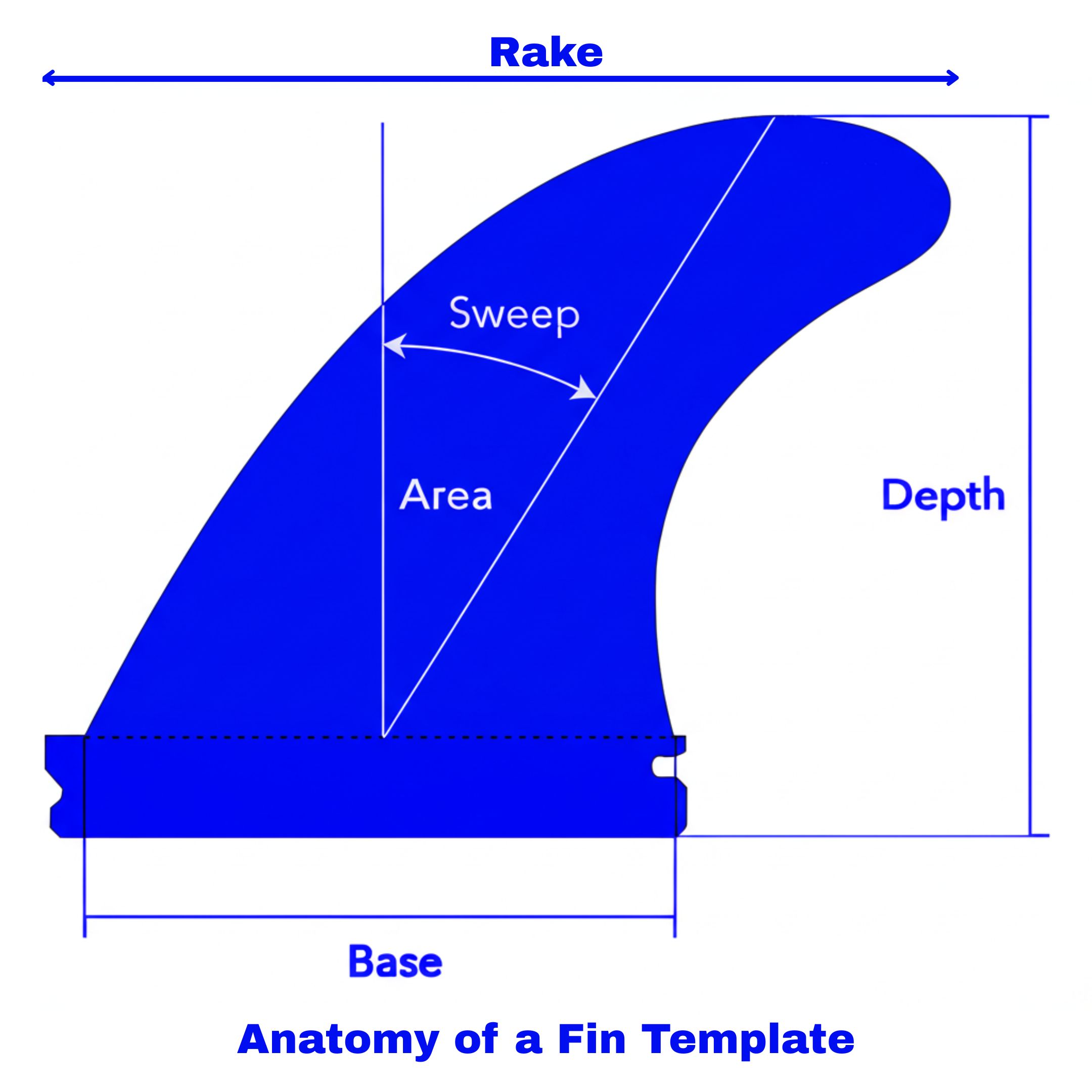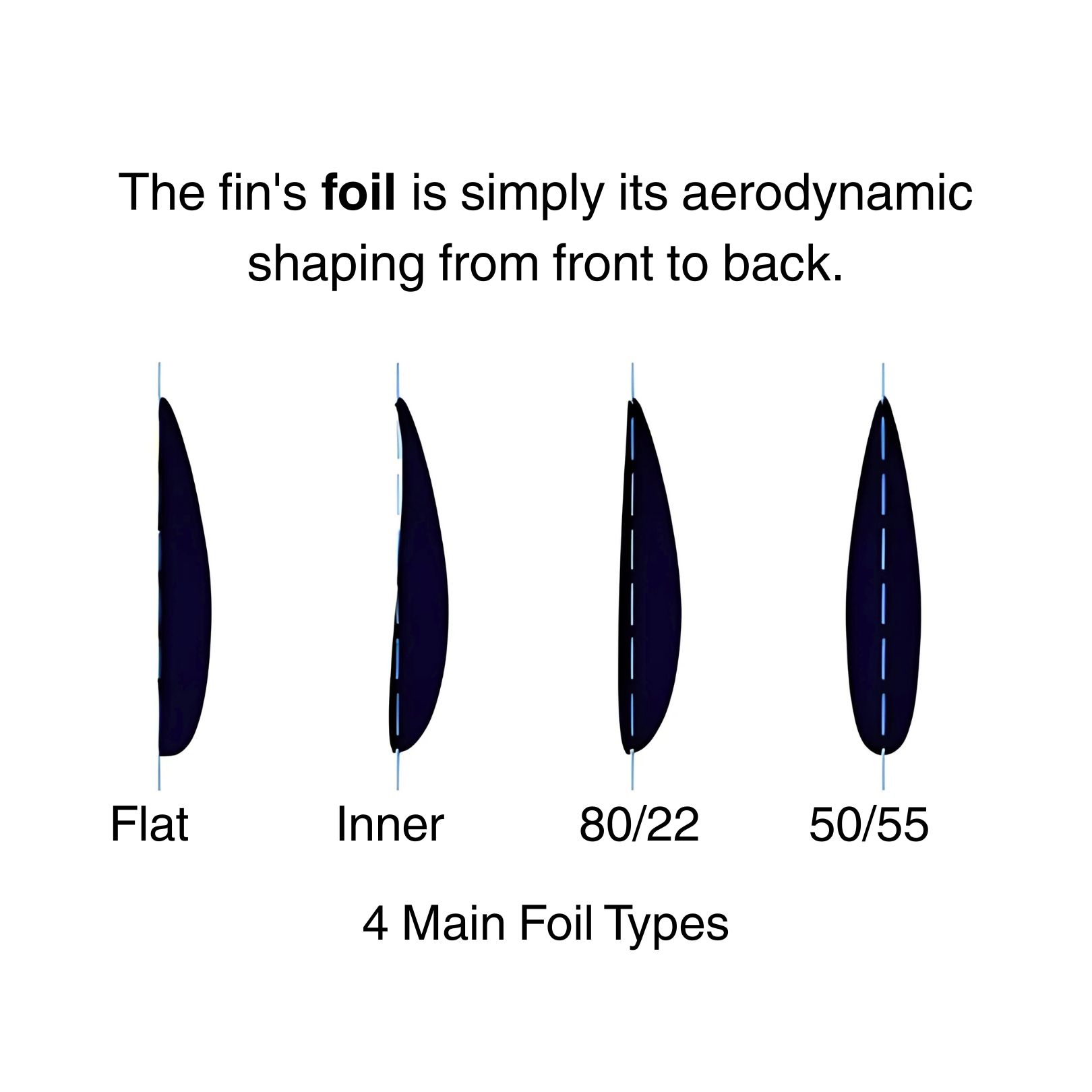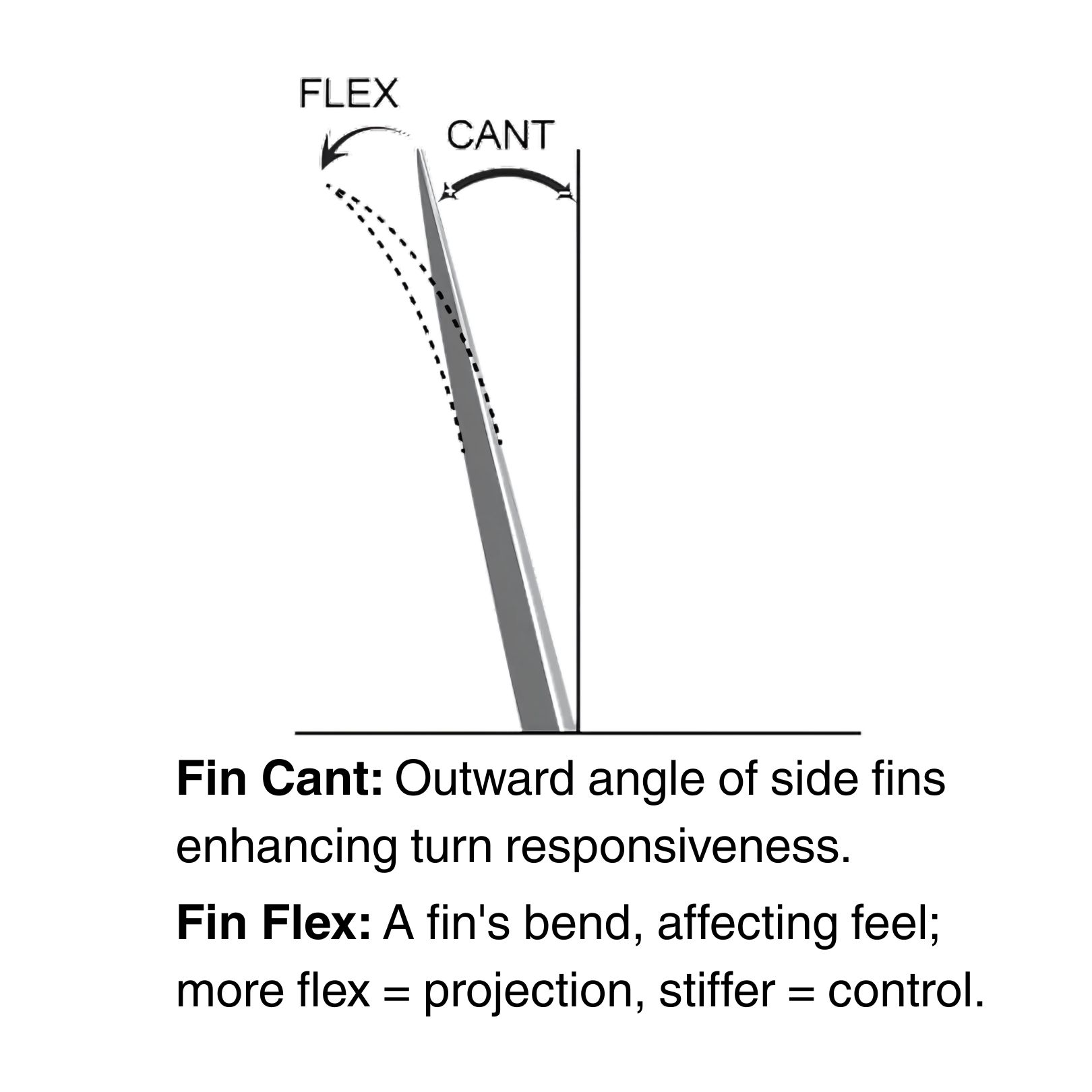
The Ultimate Guide to Surfboard Fins: Understanding How They Work
Master the fundamentals of surfboard fins and discover how each design element affects your performance in the water
From Basics to Expert Knowledge

Master the fundamentals of surfboard fins and discover how each design element affects your performance in the water
From Basics to Expert Knowledge
Jump to any section to learn about specific fin concepts
Essential functions and basics
Base, depth, rake, cant & foil
Diagrams and illustrations
Fiberglass, carbon, bamboo & more
Drive, speed, control & flow
Find your perfect fins
💬 Have specific questions? Our Expert Fin Finder chat is always available in the bottom right corner!
Surfboard fins are the underwater appendages that provide stability, control, and maneuverability to your surfboard. Without fins, a surfboard would slide sideways across the wave face with no directional control - essentially making surfing impossible.
The purpose of fins extends far beyond basic stability. They create lift, generate drive through turns, provide hold in critical sections, and allow surfers to harness the wave's energy efficiently. Understanding how fins work is fundamental to improving your surfing performance.
Understanding each component of fin design and how it affects performance
The fin base is the length where the fin connects to the board. A longer base provides more drive and acceleration, especially in drawn-out turns and powerful waves. A shorter base allows for tighter, quicker pivot turns and increased maneuverability in smaller surf.
Performance Impact: Longer base = more drive, shorter base = more pivot
Fin depth (or height) determines how far the fin extends into the water. Greater depth equals more grip and stability, particularly in larger waves or during powerful turns. Less depth results in a looser feel with easier release and the ability to slide the tail.
Performance Impact: More depth = more hold, less depth = looser feel
Fin rake (also called sweep) refers to how far the fin tip curves back relative to the base. This measurement significantly affects your turning style and board responsiveness.
Cant is the outward angle of the side fins relative to the board's bottom. More cant increases responsiveness and lift during turns but can reduce straight-line drive. Less cant (more vertical) offers more speed and drive but less turning responsiveness.
Toe refers to the angle of side fins pointing toward the board's centerline. This creates pressure on the outside fin during turns, increasing responsiveness and maneuverability. Too much toe can create drag and reduce speed.
The fin foil is the cross-sectional shape of the fin, similar to an airplane wing. It dramatically affects water flow, lift generation, and overall performance characteristics.
Equal thickness both sides. Predictable, stable feel. Common on beginner fins.
Thicker on inside, thinner outside. Generates lift and speed. Most common for side fins.
Symmetrical shape. Balanced water flow. Typically used for center fins.
Total surface area of the fin determines overall hold and drive. More area provides increased grip and power, suitable for larger surfers or bigger waves. Less area offers reduced drag and a faster, looser feel ideal for smaller conditions.
How much the fin bends under pressure. More flex provides a springy, lively feel and energy release out of turns. Stiffer fins offer more control, drive, and predictability, especially at high speeds or in powerful waves.

Fin Template & Key Measurements

Common Fin Foils

Fin Cant & Flex

Fin Toe Angle
Traditional construction offering excellent stiffness and control. Solid fiberglass provides maximum drive and hold, while honeycomb cores add flex and responsiveness.
Lightweight and extremely stiff, carbon fins provide maximum drive and response. Ideal for powerful waves and aggressive surfing but can feel harsh in smaller conditions.
Flexible composite materials that provide a lively, springy feel. Great for generating speed in smaller waves and adding responsiveness to your surfing.
Affordable option for beginners. Softer and more forgiving than fiberglass, these fins are durable and safe for learning but lack the performance of premium materials.
Eco-friendly options with unique flex patterns. Bamboo fins offer a natural, organic feel with moderate flex, while wooden fins provide classic aesthetics.
Lightweight core construction that balances stiffness with flex. Provides excellent performance characteristics while reducing overall weight.
Fins generate forward momentum through efficient water flow. Larger fins with more area provide increased drive, while proper foil shapes create lift that translates to speed and acceleration.
Fin placement and size determine turning characteristics. Smaller fins or reduced area allow for quicker pivots and tighter turns, while fin positioning affects the board's turning radius.
Fins provide grip in critical sections and powerful waves. Deeper fins with more area offer increased hold, while proper cant and toe angles enhance control during aggressive maneuvers.
The ability to release and redirect is crucial for progressive surfing. Fin design affects how easily the tail releases, allowing for slides, snaps, and fluid transitions between maneuvers.
Now that you understand the basics, let our Fin Finder AI help you choose the perfect fins for your surfing style and conditions.
💬 Don't forget - you can also chat with our Expert Fin Finder anytime using the chat box in the bottom right corner!
Get AI Fin Recommendations